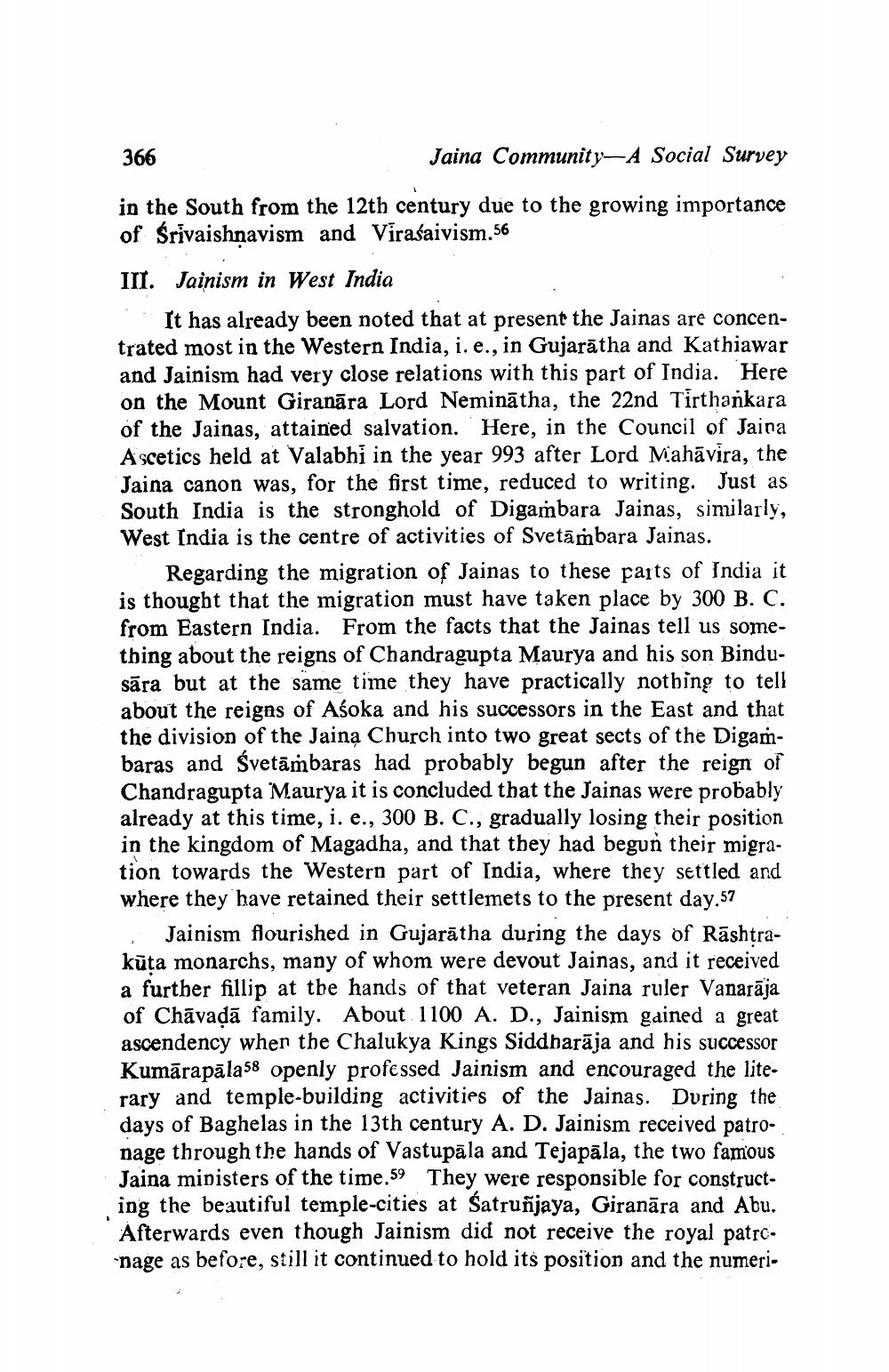________________
366
Jaina Community-A Social Survey
in the South from the 12th century due to the growing importance of Srivaishnavism and Virasaivism.56
III. Jainism in West India
. It has already been noted that at present the Jainas are concentrated most in the Western India, i. e., in Gujarātha and Kathiawar and Jainism had very close relations with this part of India. Here on the Mount Giranāra Lord Neminātha, the 22nd Tirthankara of the Jainas, attained salvation. Here, in the Council of Jaina Ascetics held at Valabhi in the year 993 after Lord Mahāvira, the Jaina canon was, for the first time, reduced to writing. Just as South India is the stronghold of Digambara Jainas, similarly, West India is the centre of activities of Svetāmbara Jainas.
Regarding the migration of Jainas to these pajts of India it is thought that the migration must have taken place by 300 B. C. from Eastern India. From the facts that the Jainas tell us something about the reigns of Chandragupta Maurya and his son Bindusāra but at the same time they have practically nothing to tell about the reigns of Asoka and his successors in the East and that the division of the Jaina Church into two great sects of the Digambaras and Śvetāṁbaras had probably begun after the reign of Chandragupta Maurya it is concluded that the Jainas were probably already at this time, i. e., 300 B. C., gradually losing their position in the kingdom of Magadha, and that they had begun their migration towards the Western part of India, where they settled and where they have retained their settlemets to the present day.57
Jainism flourished in Gujarātha during the days of Rāshtrakūta monarchs, many of whom were devout Jainas, and it received a further fillip at the hands of that veteran Jaina ruler Vanarāja of Chāvadā family. About 1100 A. D., Jainism gained a great ascendency when the Chalukya Kings Siddharāja and his successor Kumārapāla58 openly professed Jainism and encouraged the lite. rary and temple-building activities of the Jainas. During the days of Baghelas in the 13th century A. D. Jainism received patronage through the hands of Vastupāla and Tejapāla, the two famous Jaina ministers of the time.59 They were responsible for constructing the beautiful temple-cities at Satruñjaya, Giranāra and Abu. Afterwards even though Jainism did not receive the royal patrcpage as before, still it continued to hold its position and the numeri




